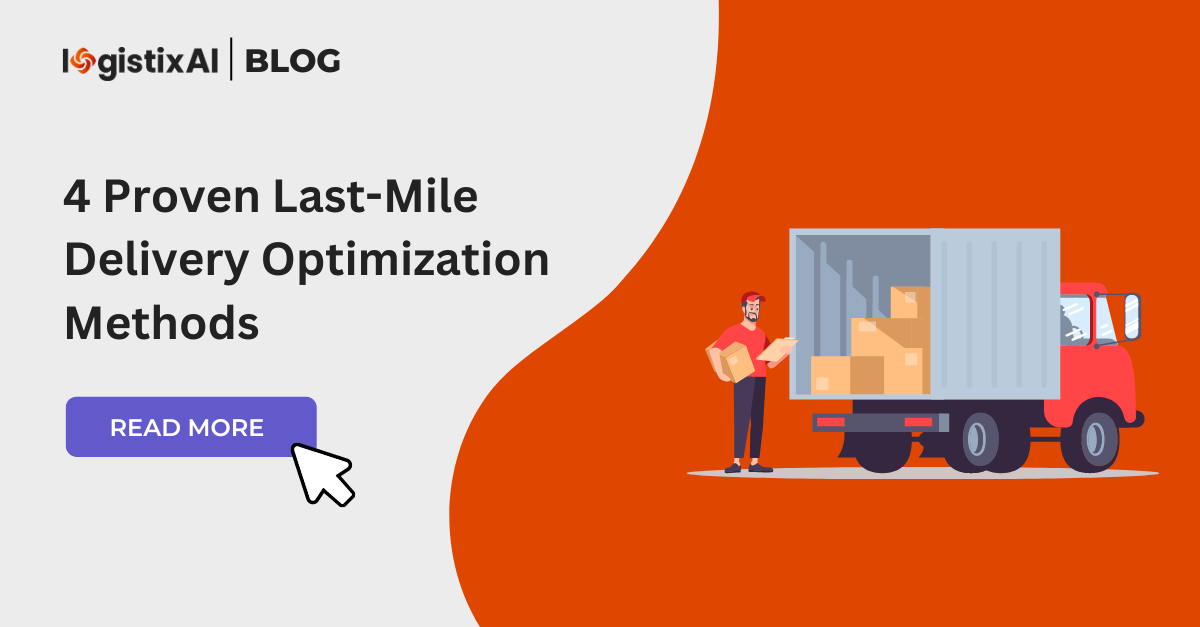Four Proven Last-Mile Delivery Optimization Methods
Last-mile delivery costs account for over 53% of total delivery expenses and contribute significantly to greenhouse gas emissions due to fossil fuel consumption. High last-mile delivery costs can erode profits, as many eCommerce companies underestimate the actual expenses involved. The challenge lies in consistently lowering delivery costs per order while maintaining punctuality and customer satisfaction. The cost to deliver can increase significantly based on the narrowness of the delivery windows promised, and with the rise in online orders, the demand for faster deliveries has surged, exacerbating this issue.
The World Economic Forum projects a 36% increase in delivery fleets in major cities by 2030, leading to a 30% rise in carbon emissions. To address these challenges, optimizing last-mile delivery is crucial. Route optimization can enhance top-line revenue, as 75% of customers are more likely to buy again from a retailer if satisfied with its delivery service, according to a Capgemini report. Thus, optimizing last-mile delivery not only ensures customer satisfaction but also fosters repeat business and loyalty.
Effective Techniques for Last-Mile Delivery Optimization
1. Crowdsource Delivery Drivers
Walmart’s Spark Delivery and Amazon Flex are examples of crowdsourced delivery platforms where independent drivers fulfill orders using their vehicles. This approach is cost-effective, as it eliminates the overheads associated with hiring full-time staff. Freelancers offer flexibility, allowing businesses to scale their delivery capacity up or down based on demand, especially during peak seasons. This dynamic adaptation reduces fixed costs and improves efficiency.
2. Use Route Optimization Software
Planning delivery routes manually is inefficient and time-consuming. Last-mile delivery optimization software, like LogistixAI, simplifies this process by automatically generating optimal routes, accounting for traffic, closures, and customer availability. This not only saves time but also reduces costs associated with fuel and wages, ensuring timely deliveries and enhanced customer satisfaction.
3. Implement Commercial GPS Trackers
Knowing the real-time location of drivers through GPS tracking helps ensure they are following the planned routes and working efficiently. It also allows for quick responses to emergencies such as accidents or vehicle breakdowns. LogistixAI’s GPS app includes a re-optimization feature, enabling rerouting to ensure timely deliveries even if unexpected issues arise.
See how LogistixAI can Transform your Entire operation
4. Provide a Customer Delivery Tracking Portal
Transparency in the delivery process is crucial for customer satisfaction. Providing customers with real-time updates through a delivery tracking portal reduces the likelihood of order cancellations and enhances their experience. Companies like Uber and Amazon have successfully used this strategy to disrupt the market. LogistixAI’s route planner includes a customer portal, allowing customers to check their delivery status independently, thus improving transparency and trust.
By implementing these strategies, businesses can optimize last-mile delivery, reduce costs, and significantly improve customer satisfaction.
Experience the LogistixAI Advantage
Whether you aim to reduce route planning time, increase the number of stops, or ensure timely driver arrivals, LogistixAI helps you achieve your goals. By leveraging our comprehensive fleet management software, you can streamline operations, save on costs, and ultimately boost your profits. Discover how LogistixAI can transform your business today!



